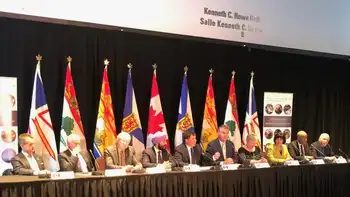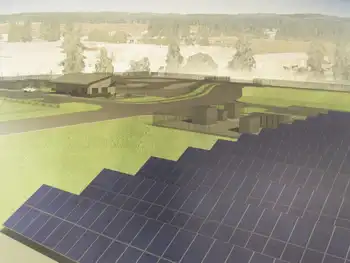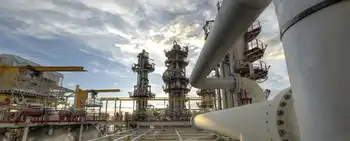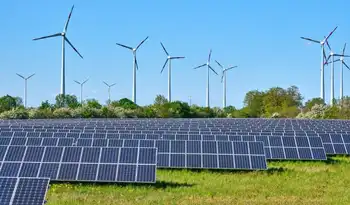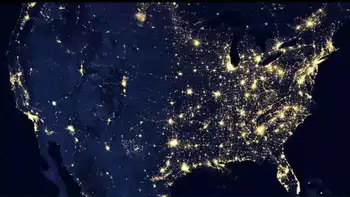The answer is blowing in the wind
By Saskatoon Star-Phoenix
NFPA 70e Training
Our customized live online or in‑person group training can be delivered to your staff at your location.

- Live Online
- 6 hours Instructor-led
- Group Training Available
Critics claim that wind energy is problematic because winds are unreliable. What do you do when the wind dies? In Canada, there is an easy solution. We get about 60 per cent of our electrical power from hydro. Hydro power is an ideal backup for wind power because it can decrease or increase its generation in seconds. Nuclear or coal-fired power plants always have to be working.
The key is to assure that peak demands are met. Wind farms can handle this situation as long as they are wisely distributed around a province. There is always wind blowing somewhere.
"With the combination of hydro power and wind energy," Scheer said. "Canada could within 10 years have a complete, renewable, clean energy power system." Wind and hydro nicely complement each other, Hornung said. In winter when river flows fall drastically, wind power is at its strongest.
"We have a huge hydroelectric grid that is very helpful for facilitating the integration of wind," Hornung said. "We sit next door to the world's biggest electricity market, which provides significant export opportunities. And we have a manufacturing sector that's struggling and is looking for opportunities to get involved in the technologies of the next century. So we think there is a great opportunity for Canada but it requires us to think big." Normand Mousseau, a physics professor at the Universite de Montreal who researches alternative energies, said that to maximize clean energy North American electricity grids should be integrated. If there was a shortage of wind power in one region, the slack could be picked up by another.
The CWEA last year set a goal for Canada of 20-per-cent wind energy by 2025 and is lobbying governments to enact the same kind of enabling legislation that Germany did.
Wind power now supplies slightly more than one per cent of Canada's electric power with 85 wind farms creating 2,369 MW of generating capacity — enough power to meet the needs of 674,000 homes.
Hornung admits the 20-per-cent target is modest to the extreme. Denmark has already reached that level and Spain is well on its way. Germany has seven per cent wind power and 18 per cent overall clean energy power.
Mousseau is convinced that Canada could easily get almost all of its energy from wind power. It's just a question of political will.
Scheer knows this story well. "We adopted (the renewable energy law) against a lot of opposition from the power companies."
Canada big power elite are primarily public utilities and oil and gas companies. They control the grids, making it difficult to establish independent and autonomous clean energy companies. Most of our green energy comes from the practice of public utilities parcelling out a small number of clean energy contracts. And where do they go? Mostly to foreign companies from Germany, Spain and Denmark where clean energy thrives.
These countries also get large energy contributions from solar, geothermal and biomass. In Germany, solar supplies 5,000MW, which is equivalent to more than three Romaine River hydro projects.
Looming oil shortages and global warming mean it is critical to act quickly, Mousseau said.
"There could be a huge upheaval if people don't move fast," he said. "We have to do it now before oil gets back to high prices.... If we don't act, then we will be in deep trouble because a lot of money will be used to buy oil instead of building new technology infrastructure and moving in the right directions." Which leads us back to cars and the air, ground and sea transportation system that relies almost exclusively on fossil fuels, without which our global economy would shut down.
What is available that will be viable alternatives to oil? As the Detroit Auto Show demonstrates, the answer is quite a bit.
Hybrid and electric plug-in vehicles are the way of the future and the faster we switch over to them the better, says Sheldon Williamson, an engineering professor and vehicle battery expert at Concordia University.
Electric buses run by capacitors are viable alternatives to our diesel buses, he said.
"I could load the bus up with all ultra-capacitors," he said. "No batteries. Forget about batteries. For a bus that makes short stops, ultra-capacitors are enough." The bus could go at least five stops, about a half-kilometre apart, then recharge in less than a minute at a quick-charging station at a bus stop as passengers get on and off.
Hybrid cars already promise 50 kilometres to a litre of gas. "For most trips you will be able to run on only electricity," Mousseau said.
Williamson said there is plenty of nickel and lithium in the world to run car batteries for years to come. Car manufacturers such as Toyota and Honda use nickel-metal hydride batteries, which are recyclable.
Public transit, intercity trains, cars and trucks can all be powered by electricity or hybrid systems.
But that's not the case with air and sea transport. At the moment, sailboats, blimps and gliders are the only answers, which are no answers at all. We'll probably just have to become more local.
The overall gripe about alternative energy sources is that they are expensive. Anybody who has shopped around for a hybrid knows that they cost several thousand dollars more than a gas guzzler.
But that is temporary. New technology is always more expensive until mass production takes over.
This is what has already happened with wind power, which is cheaper than any other power source, Scheer said.
"All clean energy is in the long run cheaper because you don't have to pay for the fuel," he said. "Renewables are the only thing that can lead to clean and cheap energy forever."
So is there really an energy crisis, or is it simply a crisis of ignorance? Human potential is the most overlooked and most important factor in overcoming the problems of peak oil and climate change, Scheer said. "We cannot discuss this question only on cost comparisons. Who has the courage in 20 or 25 years to tell their own children, 'We could have solved the problem but it was too expensive for us. The additional cost of three or four cents per kilowatt/hour was too costly for us.' That's really shabby."





